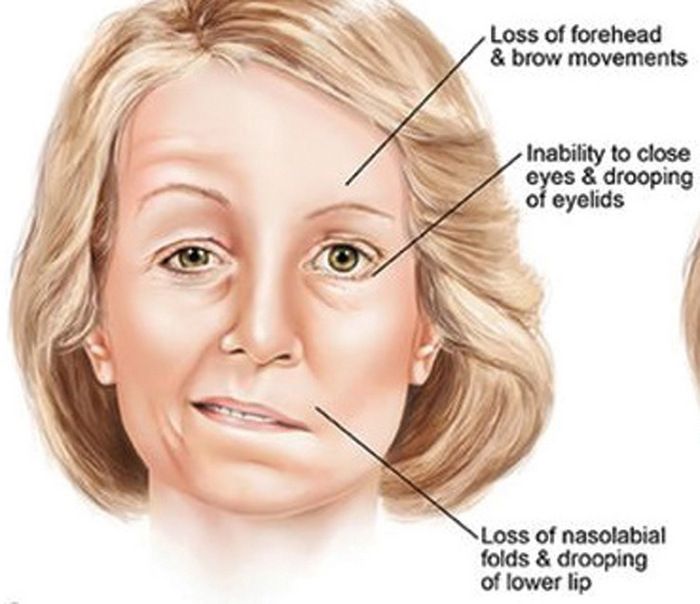Facial Palsy

The term facial palsy generally refers to weakness of the facial muscles, mainly resulting from temporary or permanent damage to the facial nerve.
When a facial nerve is either non-functioning or missing, the muscles in the face do not receive the necessary signals in order to function properly. This results in paralysis of the affected part of the face, which can affect movement of the eye(s) and/or the mouth, as well as other areas.
There are different degrees of facial paralysis: sometimes only the lower half of the face is affected, sometimes one whole side of the face is affected and in some cases both sides of the face are affected.
How do the facial nerves work?
Each side of the face has its own facial nerve, so damaging the left facial nerve will only affect the left side of the face, and vice versa. Each nerve starts at the brain and enters the face to the front of the ear where it then divides into five separate branches. These branches supply the muscles which are used for facial expression. Tears, saliva production and taste are also controlled by the facial nerve in different ways.
Illustration of the face showing the facial nerves
What causes facial palsy?
Although the most commonly known cause of facial paralysis is Bell’s palsy, there are actually many different causes of facial palsy, and treatment and prognosis vary greatly depending on the cause. Some of the main causes of facial palsy are listed below:
- Viral infections such as Bell’s palsy and Ramsay Hunt syndrome.
- Surgical causes: for example during removal of acoustic neuroma or facial nerve tumour, or when operating on the parotid gland.
- Bacterial causes such as Lyme disease or following a middle ear infection.
- Neurological conditions such as Neurofibromatosis 2, or Guillain-Barré syndrome.
- Traumatic injury such as fractures to the brain, skull or face.
- Birth trauma: for example caused by forceps or facial presentation delivery.
- Congenital conditions such as an abnormal development of the facial nerve or muscle in the womb.
- Rare genetic syndromes such as Moebius syndrome or CHARGE syndrome.
- Stroke: although a stroke can cause facial palsy it is slightly different in that the problems are not caused by direct damage to the facial nerve. The paralysis in this case is caused by brain damage and the messages not being transferred properly to the facial nerve.
Classification of facial nerve injuries
There are three different kinds of facial nerve injury:
- First degree injury – when the facial nerve is just concussed or bruised and recovers within eight weeks.
- Second degree injury – where the facial nerve is more severely damaged but still retains its outer layer. The nerve begins to show the first signs of recovery at about four months as it slowly repairs itself at the rate of around one millimetre per day.
- Third degree injury – when the facial nerve is more severely damaged, any recovery is much slower and always incomplete. Sometimes the nerve is completely severed and surgical repair is needed to restore facial function.
What functions do the facial muscles perform?
- Raising the eyebrows (frontalis)
- Closing the eyes (orbicularis oculi)
- Frowning (corrugator)
- Open mouth smiling (zygomaticus)
- Closed mouth smiling (risorius)
- Pouting (orbicularis oris)
- Lifting top lip (levator labii)
- Pulling lower lip down (depressor labii)
- Sticking bottom lip out (mentalis)
- Pulling jaw and corners of mouth gently down (platysma)
- Wrinkling nose (procerus/nasalis)
